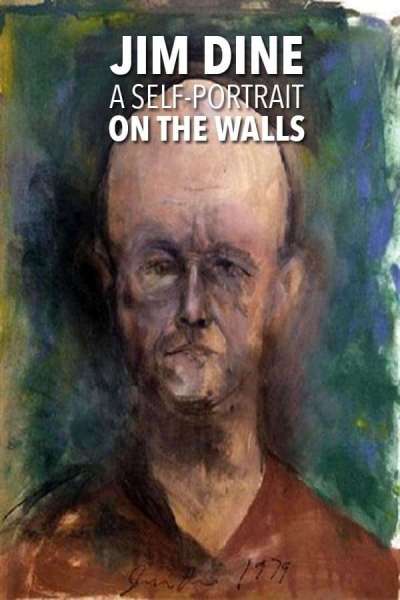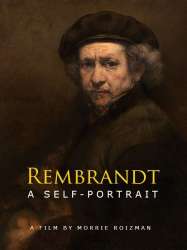Jim Dine: A Self-Portrait on the Walls est un film américain de genre Documentaire
Jim Dine: A Self-Portrait on the Walls (1995)

Si vous aimez ce film, faites-le savoir !
- Infos
- Casting
- Infos techniques
- Photos
- Vidéos
- Passages TV
- Citations
- Personnages
- Musique
- Récompenses
Jim Dine: A Self-Portrait on the Walls is a 1995 short documentary film about artist Jim Dine produced by Nancy Dine and Richard Stilwell. It was nominated for an Academy Award for Best Documentary Short.
The film presents the artist in the context of the gallery as the studio. It allows the viewers to follow along as he builds his work on the walls of a gallery in Ludwigsburg, Germany. Art students benefit from it because they learn the obstacles an artist faces when working with a medium larger than the Canson Biggie art pad, and the frustrations Mr. Dine had to face when making an image larger than life.
The narrator explains how the gallery that invited Mr. Dine to present his work could not afford to bring his finished pieces, so they commissioned him instead to simply recreate his images on their walls.
The film then follows him along as he pushes himself and an assistant to meet a six day deadline. He uses the medium of charcoal to compose portraits not only of himself but of various birds. It shows how broad, sweeping strokes must be employed; how the artist must scale a ten foot ladder for sake of a few deliberate strokes and then step back down to view it from ground level. The film demonstrates how the artist can correct one section of the image without tearing down the whole wall. The student can observe makeshift tools being created as the artist tapes blocks of charcoal to the end of a staff and 'whacks' it against the wall as he tries to achieve the look of a certain stroke. At other times the artist uses soft strokes with his palm, or a piece of bread. The viewer gets to see how tedious the work is, how abusive the charcoal is to a person's skin and hands, how personal-protective-equipment must be worn. It is a tenacious insight to the world behind the finished product; how an artist must often suffer for sake of his artform.
Mr. Dine is at times seen as being arrogant, for which he makes apology near the end of the film. However, the viewer will by that point completely sympathize with what intense pressure he was under during the filming, not only to meet the deadline but to have the works look masterful and to simultaneously have a cinematographer watching over his every move.
The final punishment the artist had to endure was at the end of the gallery's six-week event. At that point, all of his works were destroyed: the masterfully created pieces were all washed off the walls and painted over. Time for the works of the next artist to be presented.
^ "The 68th Academy Awards (1996) Nominees and Winners". oscars.org. Retrieved 2011-10-23.
^ "NY Times: Jim Dine: A Self-Portrait on the Walls". NY Times. Retrieved 2008-12-06.
Commentaires
Postez un commentaire :
Suggestions de films similaires à Jim Dine: A Self-Portrait on the Walls
Il y a 8962 ayant les mêmes genres cinématographiques, 2533 films qui ont les mêmes thèmes (dont 136 films qui ont les mêmes 2 thèmes que Jim Dine: A Self-Portrait on the Walls), pour avoir au final 70 suggestions de films similaires.Si vous avez aimé Jim Dine: A Self-Portrait on the Walls, vous aimerez sûrement les films similaires suivants :
 , 1h10
, 1h10Réalisé par Robert Flaherty
Origine Allemagne
Genres Biographie, Documentaire
Thèmes Documentaire sur l'art, Documentaire sur une personnalité
Acteurs Fredric March
Note69%





 , 1h33
, 1h33Origine France
Genres Documentaire
Thèmes Documentaire sur le monde des affaires, Documentaire sur l'art, Documentaire sur le cinéma, Documentaire sur une personnalité
Acteurs Moustapha Alassane
Moustapha Alassane est une légende vivante du cinéma africain. Son aventure nous amène aux temps du pré-cinéma, aux spectacles de lanternes magiques et aux jeux d’ombres chinoises. Premier réalisateur du cinéma nigérien et du cinéma d’animation africain, il raconte des histoires anciennes avec des moyens récents… mais narre parfois aussi les faits les plus modernes avec des bricolages les plus archaïques. Ce documentaire retrace non seulement une aventure humaine et professionnelle extraordinaire mais aussi la mémoire d’une génération, l’histoire d’un pays, le Niger, à l’âge d’or de son cinéma.
 , 1h
, 1hGenres Documentaire
Thèmes Documentaire sur l'art, Documentaire sur une personnalité
Note78%





The documentary chronicles the artist Chuck Connelly as he struggles with his temperament, alcoholism, and disillusionment with reality. These factors culminate in the alienation of gallery owners, collectors, and his wife; serving to depress Connelly further. The documentary details the tragedy of the fallen artist as he fights to maintain his dignity and integrity in the face of a world that refuses to accept him.

Rembrandt: A Self-Portrait (1954)
Origine Etats-Unis
Genres Documentaire
Thèmes Documentaire sur l'art, Documentaire sur une personnalité
Note64%






Cinematographer Style (2006)
, 1h26Origine Etats-Unis
Genres Documentaire
Thèmes Documentaire sur le monde des affaires, Documentaire sur l'art, Documentaire sur le cinéma, Documentaire sur une personnalité
Acteurs Remi Adefarasin, Roger Deakins, Michael Ballhaus, Dion Beebe, Dean Cundey, Allen Daviau
Note68%





110 des meilleurs directeurs de la photographie du monde discutent de l'art de savoir comment et pourquoi les films ont l'apparence qu'ils ont.
 , 1h26
, 1h26Origine Etats-Unis
Genres Documentaire
Thèmes Documentaire sur l'art, Documentaire sur une personnalité
Acteurs Carol Channing, Lauren Bacall, Barbara Walters, Joan Collins, Julie Andrews, Robert Goulet
Note72%






Rivers and Tides (2001)
, 1h30Origine Royaume-uni
Genres Documentaire
Thèmes Documentaire sur l'art, Documentaire sur une personnalité, Documentaire sur la nature
Note78%





Portrait de Andy Goldsworthy, un artiste qui s'est spécialisé dans des sculptures éphémères faites à partir d'éléments de la nature.

Paysages manufacturés (2006)
, 1h30Réalisé par Jennifer Baichwal
Origine Canada
Genres Documentaire
Thèmes Documentaire sur l'art, Documentaire sur une personnalité
Note71%





Le photographe Edward Burtynsky documente les effets néfastes d'industrialisation sur les paysages naturels.

Otaku Unite! (2004)
, 1h10Origine Etats-Unis
Genres Documentaire
Thèmes Documentaire sur l'art, Documentaire sur une personnalité
Acteurs Peter Fernandez, Carl Macek, Matt K. Miller, Corinne Orr
Note64%





 Connexion
Connexion
